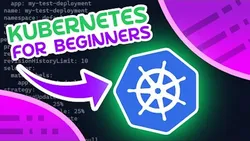
Data Wrangling Techniques in Julia - Part 2 Tom Kwong 
This video, presented by Tom Kwong, is the second part of a series on data wrangling techniques in Julia. It covers two data sets: the Washington state youth suicide data set and the TIPS yield curve and inflation compensation data set. Tom provides helpful tips and techniques for working with these data sets, and encourages viewers to contribute to the accompanying GitHub repo. ▼
ADVERTISEMENT
Course Feature
![]() Cost:
Cost:
Free
![]() Provider:
Provider:
Youtube
![]() Certificate:
Certificate:
Paid Certification
![]() Language:
Language:
English
![]() Start Date:
Start Date:
On-Demand
Course Overview
❗The content presented here is sourced directly from Youtube platform. For comprehensive course details, including enrollment information, simply click on the 'Go to class' link on our website.
Updated in [February 21st, 2023]
Tom Kwong's Data Wrangling Techniques in Julia - Part 2 course provides an in-depth look at the Julia programming language and its data wrangling capabilities. The course covers the GitHub repo for this video, the Washington state youth suicide data set, and the TIPS yield curve and inflation compensation data set. Participants will gain a better understanding of how to use Julia to wrangle data and will be able to apply the skills they learn to their own projects. Tom Kwong welcomes all participants and encourages them to help add time stamps or captions to the video.
[Applications]
After completing this course, participants can apply the data wrangling techniques they have learned in Julia to their own datasets. They can use the Washington state youth suicide data set and TIPS yield curve and inflation compensation data set as examples to practice their data wrangling skills. Additionally, participants can use the GitHub repo for this video to access the code used in the course.
[Career Paths]
1. Data Scientist: Data Scientists use their knowledge of mathematics, statistics, and computer science to analyze large datasets and uncover insights. They use a variety of tools and techniques to clean, organize, and interpret data, and then present their findings in a meaningful way. Data Scientists are in high demand as organizations increasingly rely on data-driven decision making.
2. Data Analyst: Data Analysts are responsible for collecting, organizing, and analyzing data to identify trends and patterns. They use a variety of tools and techniques to clean, organize, and interpret data, and then present their findings in a meaningful way. Data Analysts are in high demand as organizations increasingly rely on data-driven decision making.
3. Data Engineer: Data Engineers are responsible for designing, building, and maintaining data pipelines and data warehouses. They use a variety of tools and techniques to clean, organize, and store data, and then make it available for analysis. Data Engineers are in high demand as organizations increasingly rely on data-driven decision making.
4. Machine Learning Engineer: Machine Learning Engineers are responsible for developing and deploying machine learning models. They use a variety of tools and techniques to clean, organize, and interpret data, and then use machine learning algorithms to build models that can make predictions and decisions. Machine Learning Engineers are in high demand as organizations increasingly rely on data-driven decision making.
[Education Paths]
1. Bachelor of Science in Data Science: Data Science is a rapidly growing field that combines mathematics, computer science, and statistics to analyze and interpret large datasets. This degree path provides students with the skills to develop and apply data-driven solutions to real-world problems. Students will learn to use programming languages such as Python, R, and Julia to manipulate and analyze data, as well as gain an understanding of machine learning and artificial intelligence.
2. Master of Science in Data Analytics: This degree path focuses on the application of data analytics to solve complex problems. Students will learn to use data-driven techniques to identify patterns and trends in data, as well as develop predictive models. They will also gain an understanding of data visualization and communication, as well as the ethical implications of data analysis.
3. Doctor of Philosophy in Data Science: This degree path provides students with an in-depth understanding of data science and its applications. Students will learn to develop and apply advanced data-driven techniques to solve complex problems. They will also gain an understanding of the ethical implications of data analysis and the development of data-driven solutions.
4. Master of Business Administration in Data Science: This degree path provides students with the skills to apply data science to business problems. Students will learn to use data-driven techniques to identify patterns and trends in data, as well as develop predictive models. They will also gain an understanding of data visualization and communication, as well as the ethical implications of data analysis.
Course Provider

Provider Youtube's Stats at AZClass
Discussion and Reviews
0.0 (Based on 0 reviews)
Explore Similar Online Courses

An Introduction To Kubernetes - For Beginners

18 Bizarre Chess Openings Named After Animals

Python for Informatics: Exploring Information

Social Network Analysis

Introduction to Systematic Review and Meta-Analysis

The Analytics Edge

DCO042 - Python For Informatics

Causal Diagrams: Draw Your Assumptions Before Your Conclusions

Whole genome sequencing of bacterial genomes - tools and applications

Intro to the Queryverse a Julia data science stack

Intro to Julia tutorial (version 10)


Start your review of Data Wrangling Techniques in Julia - Part 2 Tom Kwong